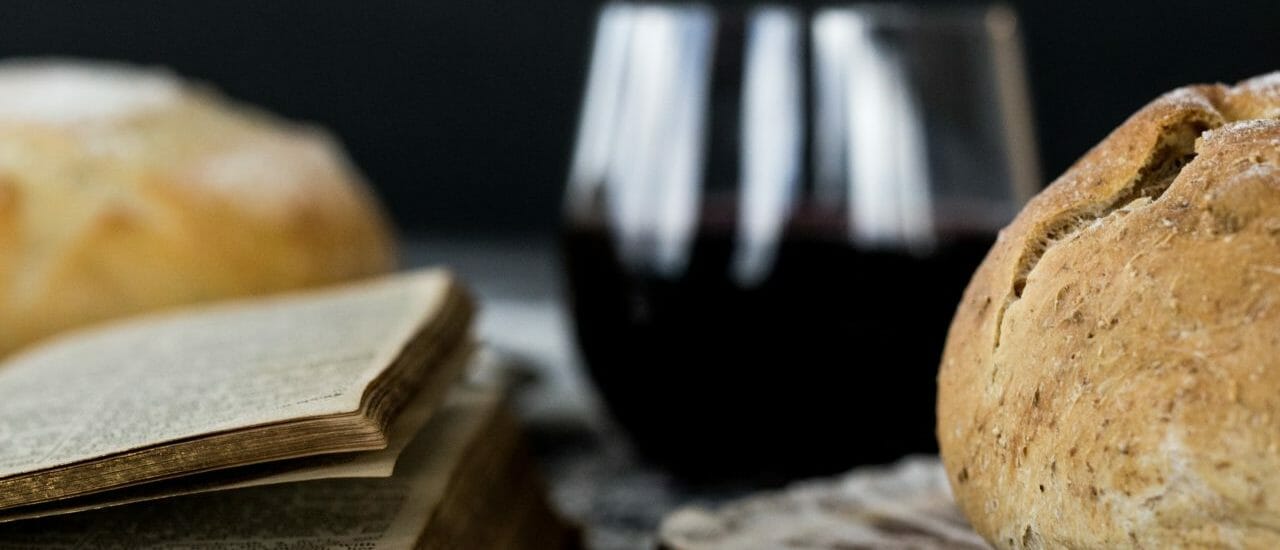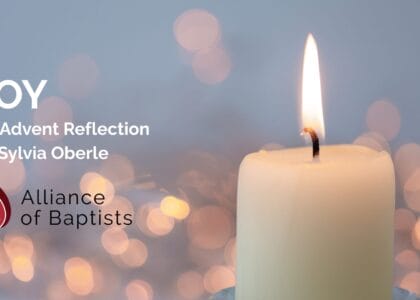By Jeffrey Vickery
As a young teenager in my S.C. Baptist church, I remember being excited every Sunday that we had communion. It was only four times a year, but it was a highlight in worship. I loved the choreographed formality of the deacons as they took the brass plates and marched them in formation through the sanctuary. Sitting with my friends, we found the small square “Baptist Chicklets” that served as the bread to be humorous. One friend prayed every Communion Sunday that the grape juice would actually change into wine. One Sunday as he prayed and waved his hand over the small cup, it tipped over and stained the white pants of the teenager sitting next to him. While taken by our adolescent distractions, the pageantry of the Lord’s Supper continued. As we ate and drank “in remembrance,” we had a part of the gospel story that we could hold and taste. It was a different way for us to find that God’s forgiveness through Jesus was real. Yet every Communion Sunday we were cautioned that these were “mere symbols.”
Even at that age, that phrase struck me as inadequate. How could what I found to be meaningful in worship be diminished by its “mere-ness”? Merely a symbol sounded like hardly a symbol. Barely a symbol. A pastoral warning that translated as: “don’t make too much of this.” What a conflict I found in that setting! While the deacons and the plates and the elements and the formality communicated something profound, its meaningful significance seemed dampened by its relegation to “mere” status.
Some years later, still drawn by the observance of the Lord’s Supper but with a wider sense of both Christianity in the world and the theological significance of Communion, I was stopped short when I read these words from theologian Choan-Seng Song about the Lord’s supper: “…the Last Supper Jesus had with his followers before he left for the last mile of his life’s journey must have been a ‘people supper.’”1
Song’s Asian-centered Christian theology is saturated with a sense of the humanity of all people. Every element of God’s compassion and justice, of the incarnation of God’s dwelling in our midst through Jesus, has its focus on the people. It’s a radically inclusive way of reading the Gospels. It criticizes the elitism of religious institutionalism and castigates the imperialism of Western Christianity. Song’s “people hermeneutic” asks us to read the biblical text and the life of Jesus through the lens of marginalized persons rather than a justification to uphold a framework of theological doctrines. It is this perspective of interpretation that Song applies to the Lord’s Supper becoming the people’s supper.
Perhaps the round table image can serve to shape our understanding of Communion, either literally or figuratively. It is both the “Lord’s Supper” and the “people’s supper” in community together. We all sit around the table together with one another and Jesus. Not just me and my friends; not just my church; not just my liturgy or my language; not just my class or my race. We all are served by God the things we need to find life and forgiveness and justice.
Song recognizes that the setting for the last supper of Jesus in the Gospels was not formalized by liturgical requirements. Surely its ceremony and ritual recounted the Exodus story of God’s liberation as observed through the Jewish practices of Passover. At the same time, it was a meal in a home with the apostles and other people present in ways that might surprise us. More was said at that meal than is recorded in the Gospels. The atmosphere was more like a dinner party with friends and neighbors than a ceremony of formality. These other people in the margins of the story were there as part of Jesus’ disciples even if they are unnamed. Servants and the poor, women and children, friends and family, sinners and those held under suspicion–how could Jesus hold a meal of this significance without these people present, too? Is it fathomable that Jesus would have withheld the same bread and wine, the same words of hope and forgiveness from these who likely stood on the edges of the room but at the center of the heart of Jesus? Consider that Jesus had demonstrated throughout his life that “his vocation was to be with people because his God was God-with-people.”1 This first Lord’s Supper, then, was intended as a “people’s supper” for all present, not just the twelve. Whenever we limit the sharing of Jesus to those we choose to label “approved” or “included” then we have violated the Lord’s “people supper” by our exclusivity.
To help us understand the Lord’s Supper as the “people’s supper,” Song turns our attention to the Communion table itself. Most Communion tables in churches are rectangular. Whether this influence comes from the typical family dinner table in Western cultures or from Da Vinci’s famous painting of the last supper is hard to say. Yet in shared meals for meaningful occasions in Asian cultures a round table is preferred because it is inclusive. The family table at a Chinese New Year’s celebration is round. So is the table at a wedding feast, and also at a funeral meal. The very shape itself is hospitable. When one joins a round table, it is joined in equity with others. No one sits at the head over another. The round table strengthens relationships providing a sense of togetherness both in celebration and grief, among old family and new friends. The round table is intended to eliminate loneliness and isolation–there is no lower end of the table to relegate some, ignore the unwelcome, or diminish their place in communion with the whole.
Perhaps the round table image can serve to shape our understanding of Communion, either literally or figuratively. It is both the “Lord’s Supper” and the “people’s supper” in community together. We all sit around the table together with one another and Jesus. Not just me and my friends; not just my church; not just my liturgy or my language; not just my class or my race. We all are served by God the things we need to find life and forgiveness and justice. The table doesn’t belong to the pastor, the deacons, or the church. The table should not be guarded by an elitist theology or an exclusive membership. It is the people’s supper embodied by God’s radical and inclusive love in the life of Jesus. Since we need to be reminded of this often, we rightly come together as a communion of equals to taste the bread and wine so that we and the world can be nourished with grace and peace and justice. And as the world itself is round, this World Communion Sunday, the Earth serves as God’s round table of communion where we all belong and for whom God’s love is unbounded.
1C.S. Song, Jesus, the Crucified People (Crossroad: New York) 1990.

Jeffrey Vickery has served alongside Tonya Vickery as Pastors of Cullowhee Baptist Church since 2002 and as an Adjunct Instructor in the Department of Philosophy and Religion at Western Carolina University since 2004. Cullowhee Baptist Church celebrated its 200th Anniversary in November 2021, and has been solely affiliated with the Alliance of Baptists since 2018.





Recent Comments